

Originally posted May 4, 2016
As mentioned elsewhere, the Gun of the Week I had planned for this week got delayed by logistical concerns, so instead we'll be taking a quick look at something else. Our emergency backup Gun of the Week is another little gem from the Eastern Bloc:
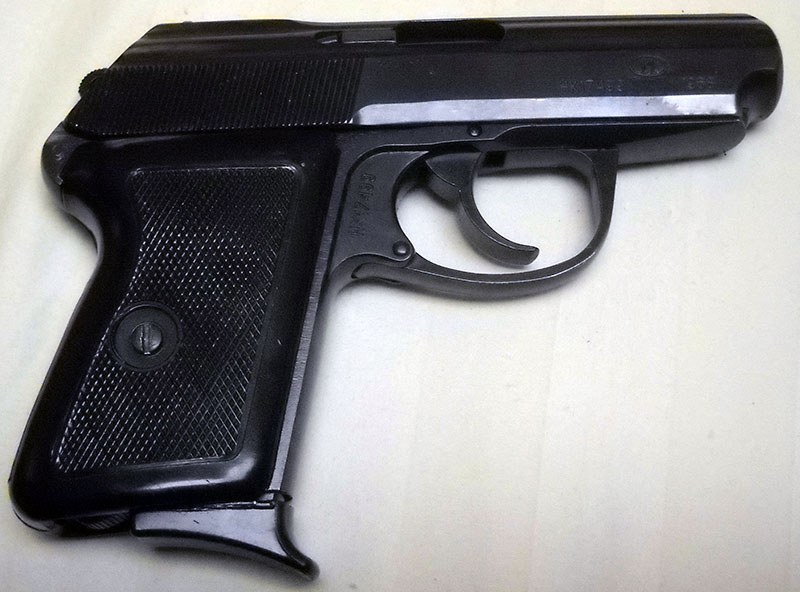
This is a P-64, or to give it its full and proper name, a 9 m/m pistolet wz. 1964, which was until recently the standard handgun of both the armed forces and the national police of Poland. You will also occasionally see these referred to in the West as Radom P-64s, as if Radom were the name of the manufacturer; it's actually the town where the Lucznik state arsenal that made them is located. It's also sometimes called the CZAK, after the initials of four of its five designers (the fifth didn't get his name on it for some reason). The CZ is entirely coincidental, by the way, and has nothing do with the Czech arsenal/firm Ceská Zbrojovka.
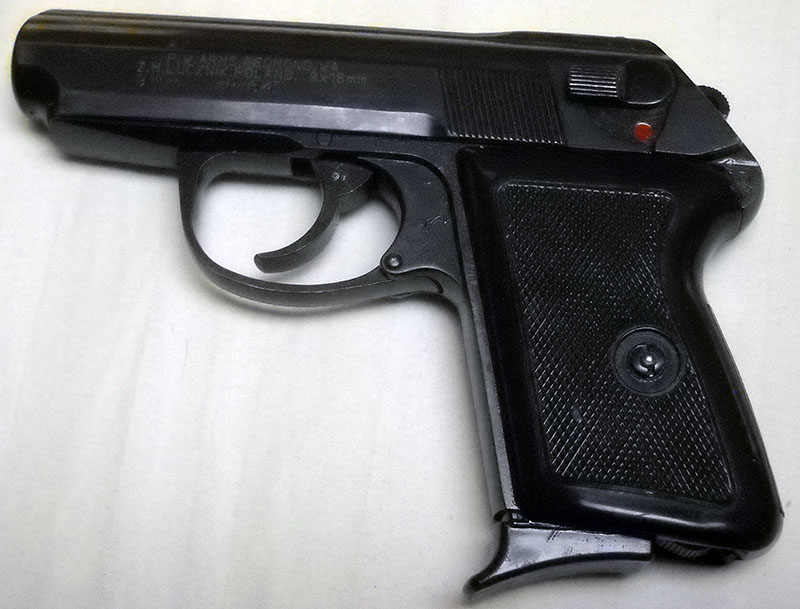
The P-64 was developed in the late 1950s, and was the result of a design process that should be familiar, in its broad strokes, to anyone who has developed software. For the competition to build the new Polish military and police pistol, the CZAK team developed two prototypes, the Model M in 9x17mm Browning Short (also known as .380 ACP) and the larger Model W in 9x18mm Makarov. The winning pistol was the Model M... but it had to be rechambered for the 9mm Makarov cartridge, because Soviet Bloc. This was not a trivial job, because for all that its case is only one millimeter longer, 9mm Makarov is a considerably more powerful cartridge than .380 ACP.
The result is mildly odd, in that it is a very small pocket-style pistol, but chambered for a round that is nearly as demanding as 9x19mm Parabellum. This is a thing that has been done only with fair difficulty today (with items like the super-compact Glocks and the Walther CCP), and the CZAK team were faced with a similar conundrum in 1961. They mostly solved the problem, but at the expense of a fair bit of usability.
The problem is that it's a simple blowback action, as previously discussed, but it's so small that the slide can't have the kind of mass, and thereby inertia, required to make simple blowback safe with such a powerful cartridge. The only other way to fire a cartridge as hot at 9mm Makarov safely without resorting to some sort of locking or gas delay system (the latter is used in the CCP) is to use really, really stiff springs. And they did. It makes the P-64 safe to shoot, but very difficult to operate for its size. Not only is the slide hard to work by hand thanks to the stiffness of the recoil spring, the trigger is atrocious, I would assume because of how stout they had to make the striker spring.
The result is a pistol that has nice ergonomics at rest, but is difficult to operate. I haven't shot mine yet, but having experience the 9mm Makarov cartridge in larger, more mechanically elaborate handguns, I can only assume that its recoil is ferocious. This was probably not a big deal for its military users, since military sidearms are only employed somewhere on the rare side of never, but generations of Polish policemen must have spent their days praying to the God their Communist government would've preferred they didn't worship that they wouldn't actually have to try and use their pistols in anything like a hurry.
They would have been particularly tasked by the way the pistol's safety works. Like most hammer-fired semiautomatics, the P-64 is left with a live round in the chamber and the hammer cocked after it's loaded and charged.
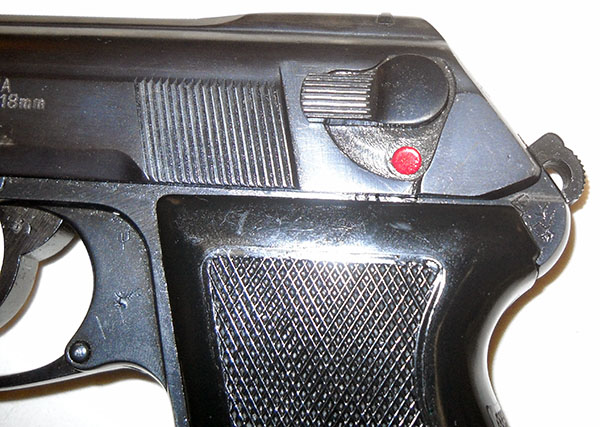
Switching the safety on automatically decocks the hammer at the same time.
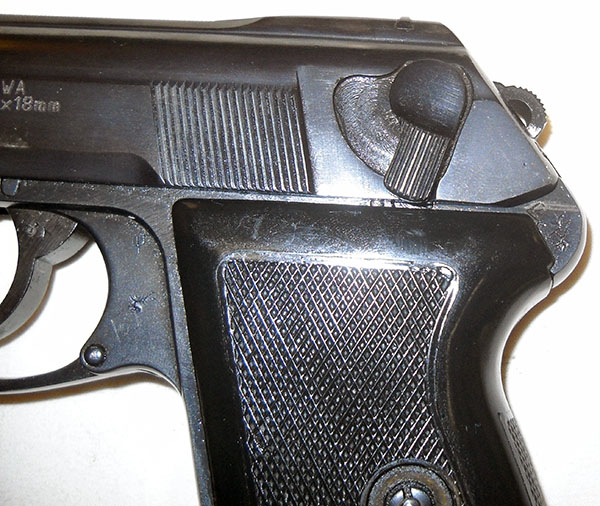
This is good news for safe carry, but bad news for rapid employment, because the P-64's double-action trigger pull is horrendous. Its single-action pull is nothing that will win any user awards either, but, not even kidding here, its double-action pull is worse than my Nagant's, and the Nagant is famous throughout the shooting community for the heaviness and awkwardness of its double-action trigger. Robocop would glance dubiously at this pistol after having to fire it from its hammer-down/safety-on configuration. It's awful.
Cocking the hammer manually and firing the first shot in single action is possible, technically, but with that bobbed ring hammer, it's a questionable improvement. Thumbing back the hammer is even harder than just pulling the trigger, thanks to the lack of leverage.
Also not winning any prizes is the P-64's magazine release. It's a heel release, as is found on many a small European handgun, but it's recessed to the point of almost being hidden and is a royal pain in the butt to operate.
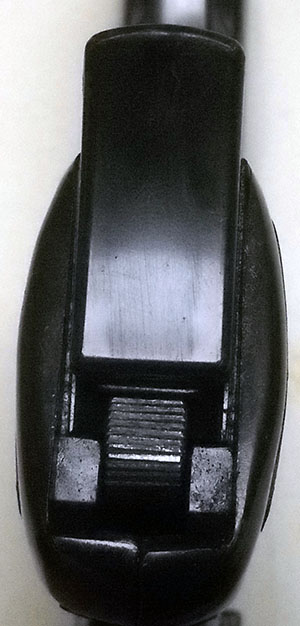
If you had the misfortune of having a magazine in there that didn't have the extended pinky rest on it, say it had broken off or something, you would be in for a really hard time getting the magazine out of this sucker. And since it only holds six rounds, you'd probably have to at some point if you were in a Serious Situation.
Nevertheless, I don't want to seem like I'm completely down on the P-64. It does have some good qualities. It's very compact for a handgun as powerful as it is, which is likely to have been very welcome to many of its official users over the decades. Its mechanical simplicity, though it leads to difficulties with its powerful cartridge, does mean it's sturdy and reliable, without a lot about it that can go wrong. The trigger is terrible, but it feels like if you're strong enough, it will work every time. And if the slide is hard to work by hand and the magazine release is a pain, at least it does lock open when it's empty, so you don't have to do the former if you're reloading under fire.
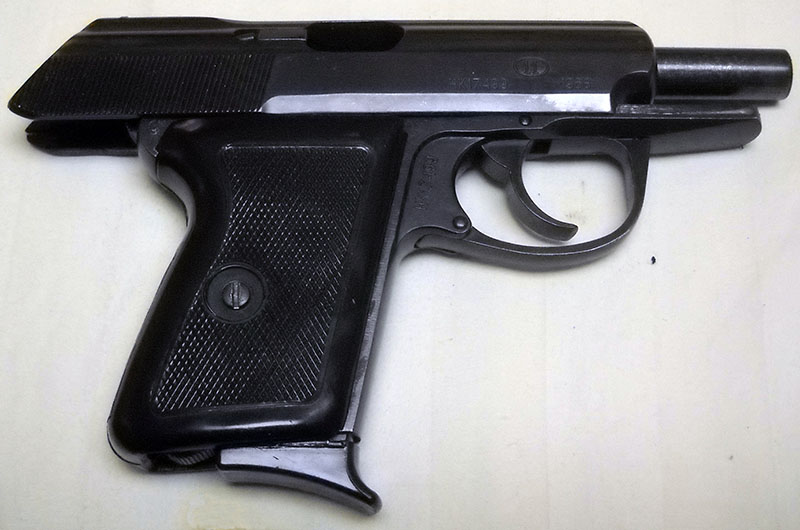
However—and this has to be chalked on the "questionable decisions" column—it has no manual slide release, so once you've put in a fresh magazine, you will have to pull the slide back a little farther against its powerful spring to unlock it and drop it on the first new round. That's a bit odd; usually pistols either have a slide release lever, or don't have a slide lock in the first place.
At a glance, this pistol looks a lot like a Walther PPK, and there are good reasons for that. It isn't a straight-up copy of a PPK, but its designers were clearly familiar with the German gun, and they used a lot of the same ideas, as we'll see when we get to the disassembly. In fact, let's do that now.
As with the PPK, disassembly starts (after making certain it's unloaded, of course) by pulling the front of the trigger guard down to unlock the slide retention mechanism.
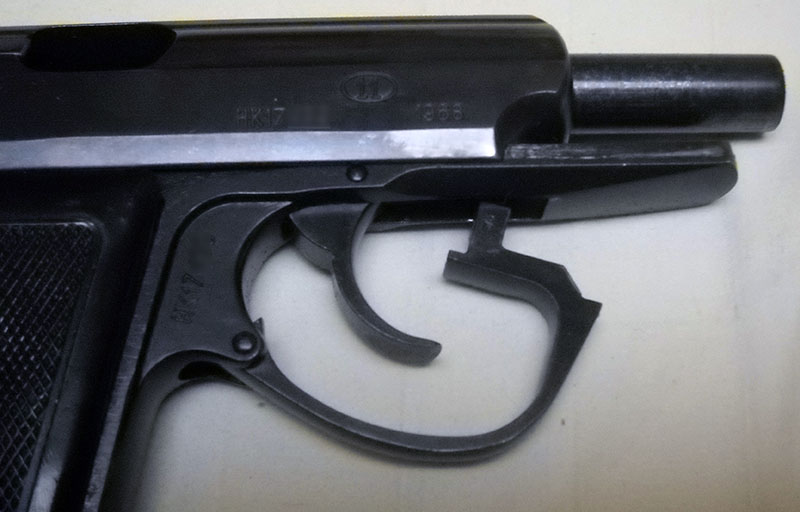
Once that's done, and with the magazine removed (at least far enough to disengage the slide lock), the slide can (with some effort) be pulled back far enough to lift the back of it off the rails, at which point the whole affair will come forward off the frame.
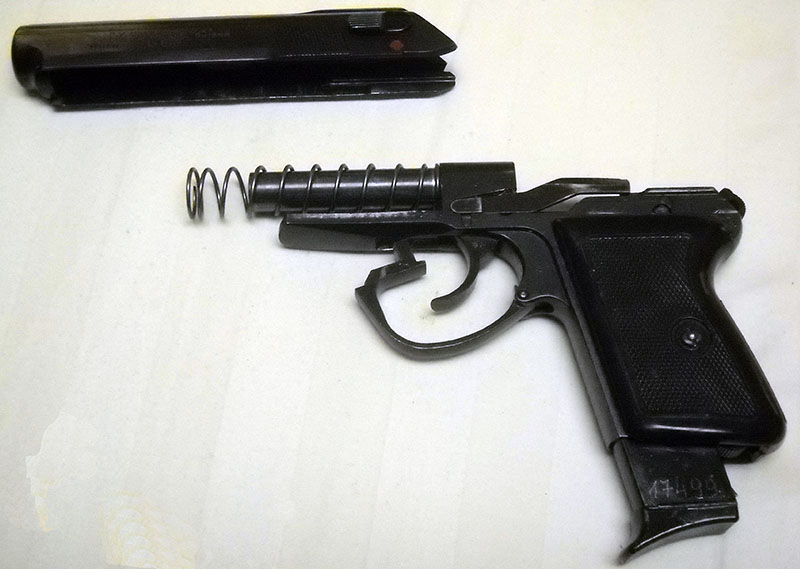
This is all looking very PP-like in here. The fixed barrel with the recoil spring around it is practically a Walther trademark (and was also copied by, for instance, the eponymous designer of the Makarov pistol, and the makers of the Czech vz. 82 we've looked at before in Gun of the Week). Also visible in this shot, along the slide rail in the middle, is what I believe to be the slide lock lever. You can see where the manual release would be on that lever if it had one; instead, it's fully internal when the pistol is assembled and inaccessible to the operator.
These pistols have started to be phased out of service and replaced with a new design in 9mm Parabellum, and so the collector market here in the US (traditional last stop for decommissioned East European firearms since the Cold War ended, as one of the last large economies in the world where civilian firearms collectors even exist) has been awash with them of late. Some people are apparently even buying them with the intent of using them for concealed carry, and to those people, I say good luck, godspeed, and you should really buy one of those finger-strengthening devices like guitarists use.
Since they were military/police pistols made by government arsenals in a police state, these pistols have no branding or really much in the way of markings at all, apart from government proof marks, serial numbers, and the odd arcane manufacturing mark. Mine bears electro-engraved importer's marks from an importer in Redmond, Washington, and that's about it. The particular one I have was billed as "appears unissued" and is in a very unworn condition, but it came with a holster that looks like it's seen quite a lot of use:
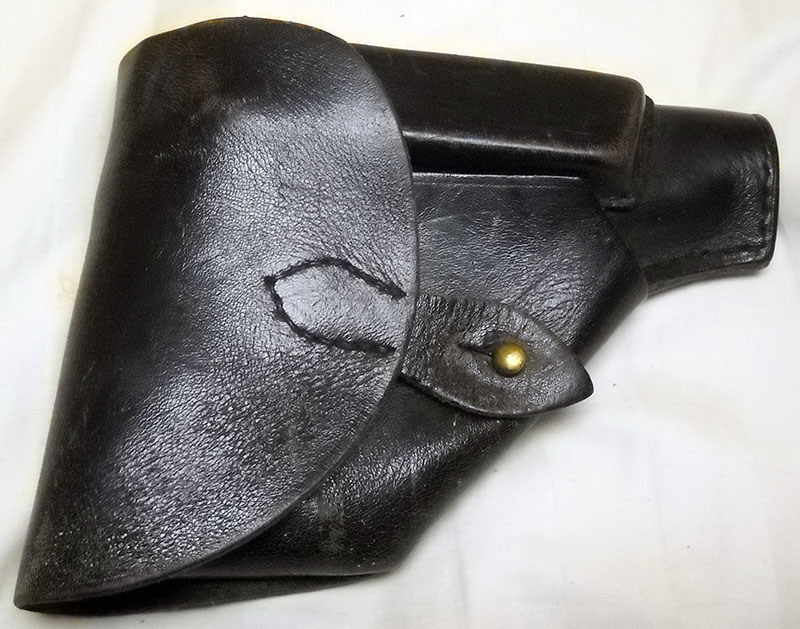
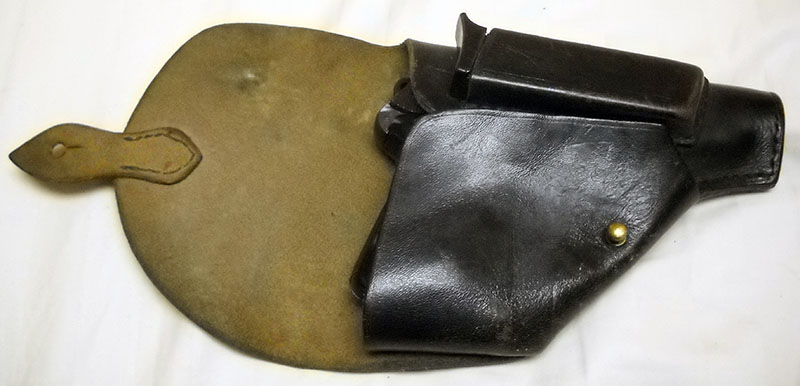
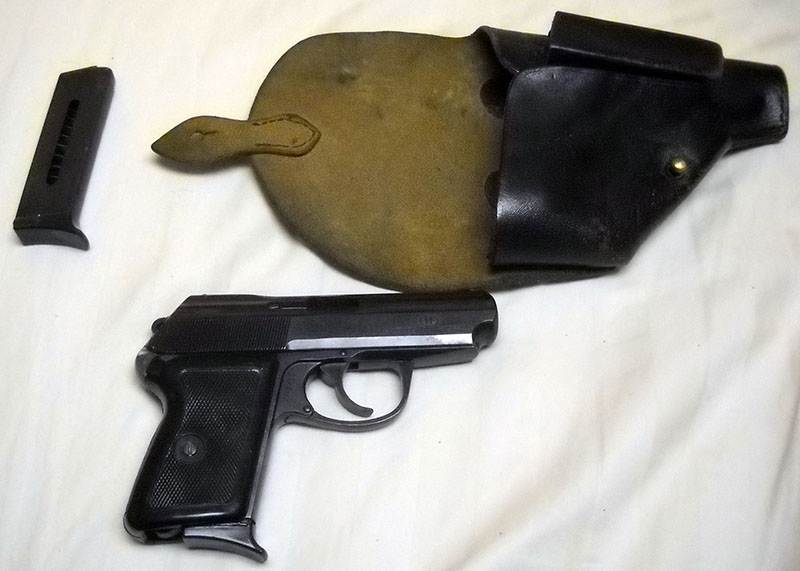
It also came with a spare magazine onto which someone has clumsily hand-engraved the pistol's serial number. Whether that was done by the importer, or some unknown Polish armorer back in the days when it was part of an arsenal stock, I have no way of knowing now.
When I was a kid, Poland was routinely the butt of jokes, the casual exemplar of a place that was technologically and culturally backward even by the expected standards of the Communist Bloc. This was entirely unfair, like many stereotypes that were sloshing around Middle America when I was a kid, and items like this one really make that clear. This is a quality product.
This should really not be surprising. Radom has long been one of the great Eastern European centers of gun manufacture; compare Tula and Izhevsk in Russia, or Brno and Uherský Brod in the Czech Republic.¹ They do good work there, and for all that this is a strangely designed pistol whose engineering involved a lot of questionable compromises, its construction is excellent. They're inexpensive at the moment because they're very numerous and, being surplus hardware belonging to a cash-hungry government with a limited market for offloading them, they probably didn't cost the importers much; but there's nothing cheap about them.
--G.
¹ Or whatever they're calling it these days. I read a thing the other day that the Czech government wants other countries to call it "Czechia" now, which seems like a recipe for being mistaken for Chechnya to me, but nobody consults me on these matters. I'm from the '80s, so half the time I still call it Czechoslovakia, which would surely annoy both my Czech and Slovak friends if I had any.